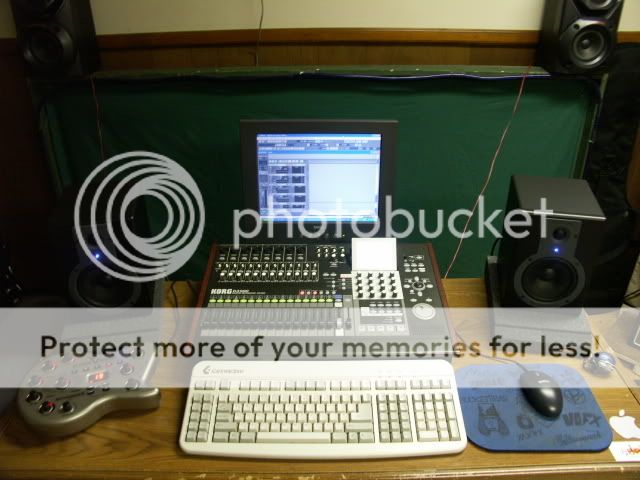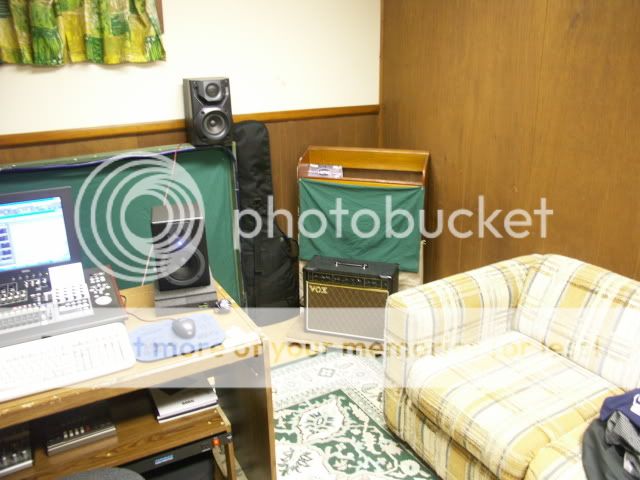Appreciate the input, I do. But if I want my control room to face a wall, why not just put up a wall in front of the board in the layout I have? Why move things around? The only reason I did not was to keep an "open" sounding room and not shorten the reflections (given I'm new to this thread but it would seem in a space this tight that taking advantage of every inch would be important). Anyway, let me give a little more detail...that may help. I have
an Alesis DM Pro kit. Would I like to expand to acoutic drums some day? Maybe, but not anytime soon, and I have structure I am building onto if I decide to expand. For now, DM Pro is what I'll be using.
Bass, I go direct into a joemeek VC1Qcs into a Mackie 24.8. Vocals go through joemeek also, VC3 original, MQ3, or VC1Qcs (yeah, I am joemeek biased, but I mainly have these because I assign all 6 outputs of the DM Pro unit to individual channels on the board and eventually to the recorder, and joemeek does wonders (in my opinion) with the DM Pro, and exceptionally well on vocals and amp'ed guitars.
And speaking of which, I always mic my guitar tracks. I don't think I would ever want to compromise that, but that is just a personal preference. So I want as much reflective property as I can out of a little 13'X14' interior space.
Now this is CBS (concrete block structure) structure, like the garage it is sharing one wall with. Concrete slab floor with an elevated hardwood floor as the finish. Double drywall for the interior walls as I have seen recommended here. Ceiling from what I have read may be good as a second reflection from the floors, so I'm thinking tongue-and-groove wood right now, unless that is a poor choice...theory being, and what I've read, reflective on the floor and ceiling is good, reflections from the sides should be controlled, and 90 degree corners are generally not good.
I cut the form boards for the foundation tonight. Still have to level and nail them to the stakes (already squared and leveled) and then prepare for the foundation pour, hopefully this weekend. Of course I need to concentrate on the structure first, and anything interior is still up for grabs.
Anyway, so should I isolate the control room, given it will take up precious volume? The board has a separate power supply with a fan but it is pretty quiet. Alesis HD24 is quiet. Outboard gear is not making much noise. To me, it doesn't seem like a priority, but maybe I'm wrong. And if I am, I wonder if I could build something convertible, retractable so when I need isolation during mixing I could put the wall into place, but leave things open when micing electric guitars, acoustic guitars and vocals. What do you think?


 lol
lol












